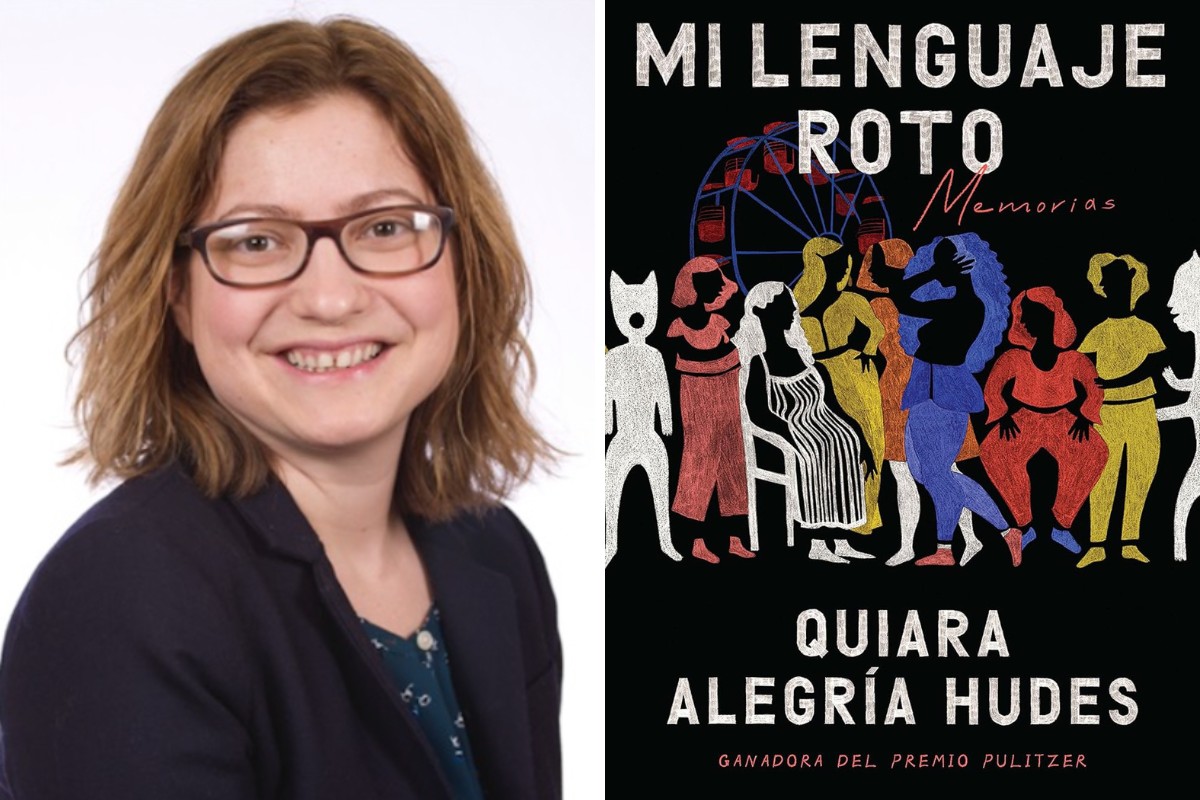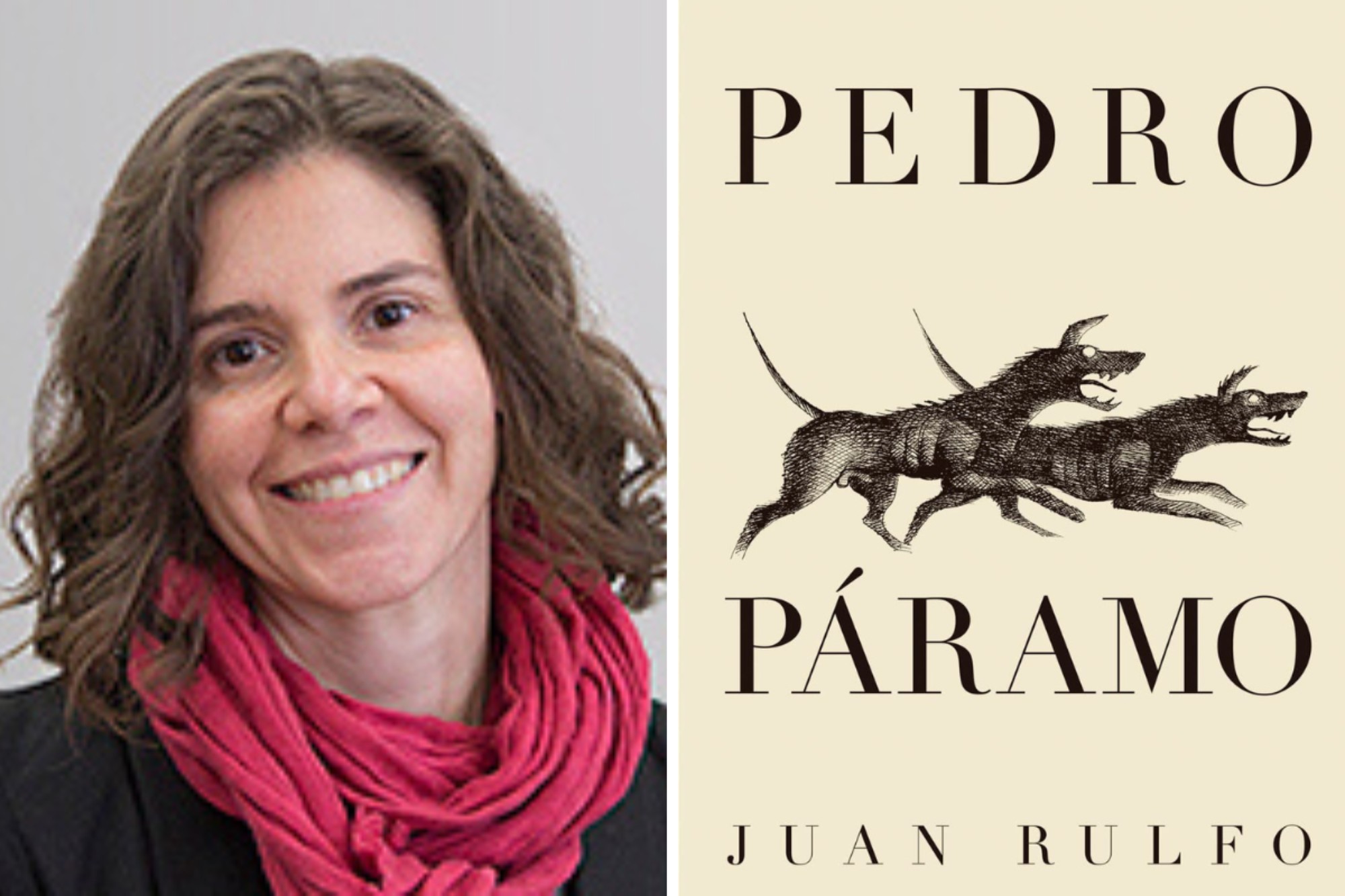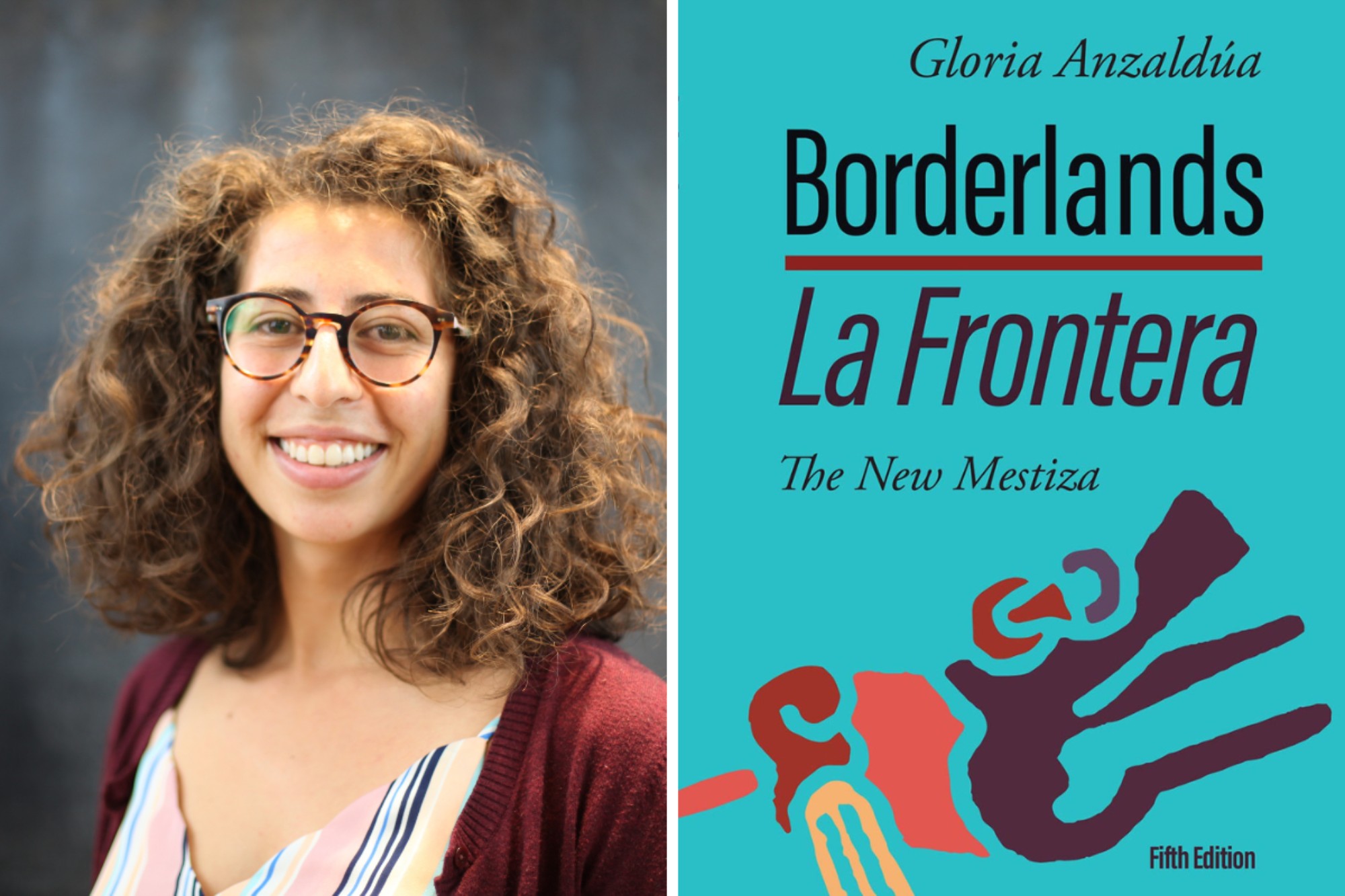From coming-of-age tales to explorations of family, identity, and culture, these book recommendations from TC faculty and students offer a glimpse into the rich and diverse experiences of Latine and Hispanic communities.
1. My Broken Language by Quiara Alegría Hudes

Professor María Paula Ghiso, Professor of Literacy Education. (Photos courtesy of TC Archives and One World)
In this memoir, Pulitzer-Prize winner Quiara Alegría Hudes reflects on her upbringing in North Philadelphia, exploring race, language, and social class complexities. Through her storytelling, Hudes illuminates her family's experiences amid Puerto Rican legacies of coloniality and genocide.
“As a Latine immigrant and a teacher, I was drawn to Hudes’ recounting of the education system as a site of segregation within the city,'' shares María Paula Ghiso, Professor of Literacy Education. “The memoir details her navigation through elite, primarily white institutions like Yale and engages within and against the Western canon of music and literature while writing her own story as a corrective to her community’s buried histories.”
2. Azul by Rubén Darío

Sandra Ward, current student in TC’s Psychology in Education program. (Photos courtesy of Ward and BN Publishing)
Azul is a collection of short stories and poems by Nicaraguan poet Rubén Darío. Published in 1888, the book is Darío's first significant work and is recognized for its influence in the Modernismo literary movement.
“Throughout elementary school and high school, every year on January 18, we celebrated Ruben Dario, considered by many to be one of the greatest poets who ever wrote in Spanish,” shares Sandra Ward, a current student in TC’s Psychology in Education program. “[Darío] is considered the father of the Spanish-American literary movement.”
3. Solito by Javier Zamora

Regina Cortina, Professor of Education (top) and Sofia Rosario (M.A. ‘24) (bottom) a current student in TC’s English Education program. (Photos courtesy of TC Archives, Rosario and Hogarth)
In Javier Zamora’s Solito, a poet recounts his journey of seven weeks from his native El Salvador to reunite with his undocumented parents in the United States. No one knew where he was during his journey alone (solito) to reach his parents.
“[Zamora’]s life story is a reality for many students in NYC living in mixed-status households,” shares Sofia Rosario (M.A. ‘24), a current student in TC’s English Education program. “Zamora’s bravery to speak about his undocumented status is inspiring and has inspired me to speak more openly about undocumented issues as a first-generation American. I hope it reaches more Latinx families assimilating into the American landscape.”
A New York Times bestseller, the memoir details emotions of courage, hope, and the importance of family. “It’s a true immigrant story, but it is also so much more,” shares Regina Cortina, Professor of Education. “The book captures the perseverance and the rise of Latinx peoples in the United States.”
4. Pedro Páramo by Juan Rulfo

Olga Hubard Orvananos, Associate Professor of Art Education. (Photos courtesy of TC Archives and Grove Press)
Recommended by Olga Hubard Orvananos, Associate Professor of Art Education, Pedro Páramo by Juan Rulfo is a powerful novel that depicts a man’s strange yet captivating quest to discover his Mexican heritage while detailing power and its pitfalls.
“It is compelling, confusing, and inspiring, just like life itself,” shares Hubard-Orvananos. “I particularly enjoy how Rulfo blurs the line between the real and the unreal, the worldly and the otherworldly in this book.”
The novel has since become known for its style of "magical realism" and remains a classic today, inspiring other Latine writers, including Jose Donoso, Carlos Fuentes, Mario Vargas Llosa, and Gabriel Garcia Marquez
5. Borderlands / La Frontera: The New Mestiza by Gloria Anzaldúa

Alejandra Cardenas (M.A. '25), current student in TC’s Art & Art Education program. (Photos courtesy of Cardenas and Aunt Lute Books)
In Borderlands/La Frontera: The New Mestiza, Gloria Anzaldúa's essays and poems, born out of her identity as a Chicana, lesbian, activist and writer, are a profound manifestation of challenging, conventional notions of identity.
“Anzaldúa's use of both prose and essays beautifully highlights the intersectionalities of the Latine community, specifically through her personal experiences as a Chicana,” shares Alejandra Cardenas (M.A. '25), a student in TC’s Art & Art Education program.
“Her discussion of gender, sexuality, and culture resonates with Latines who have found difficulty finding their place while also giving non-Latines insight into the challenges we face.”
